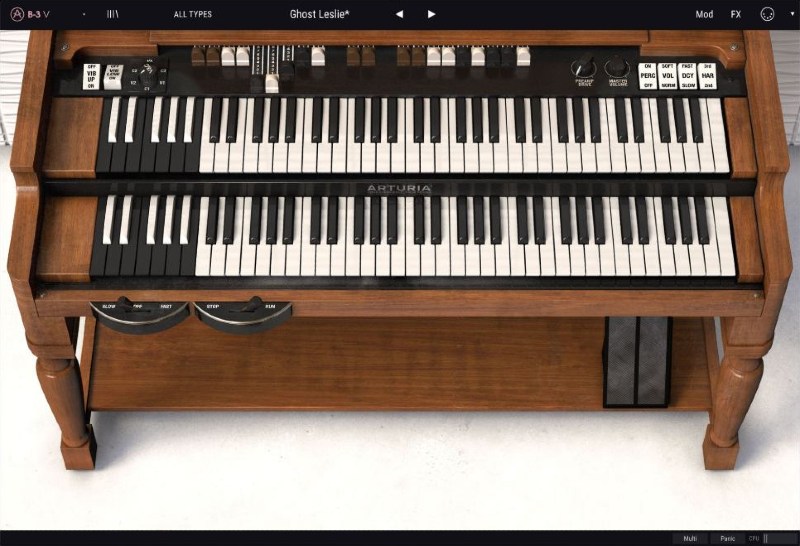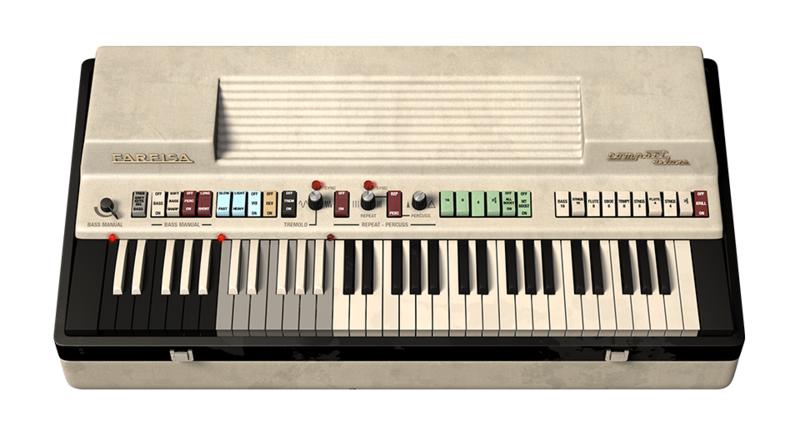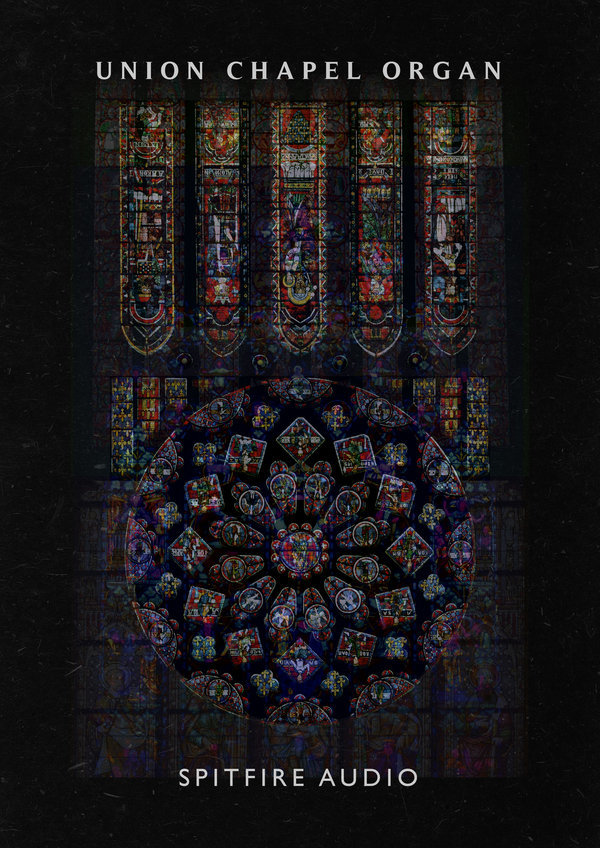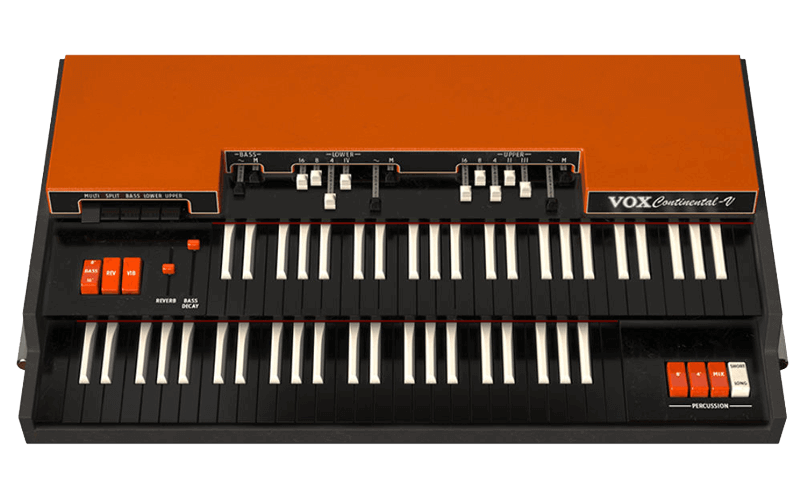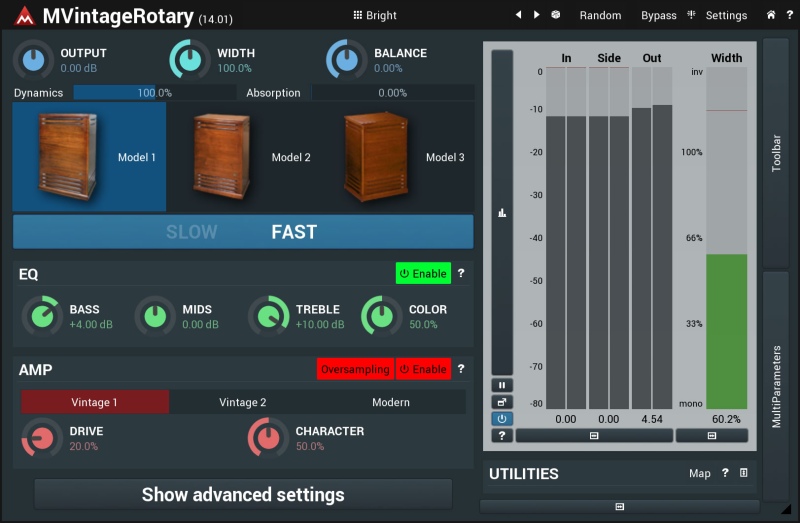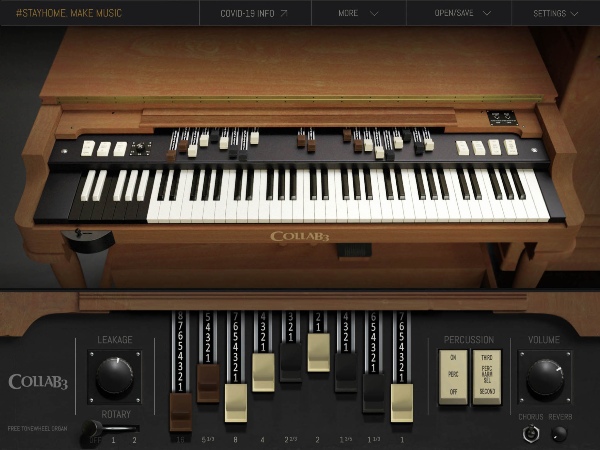Best Organ VSTs
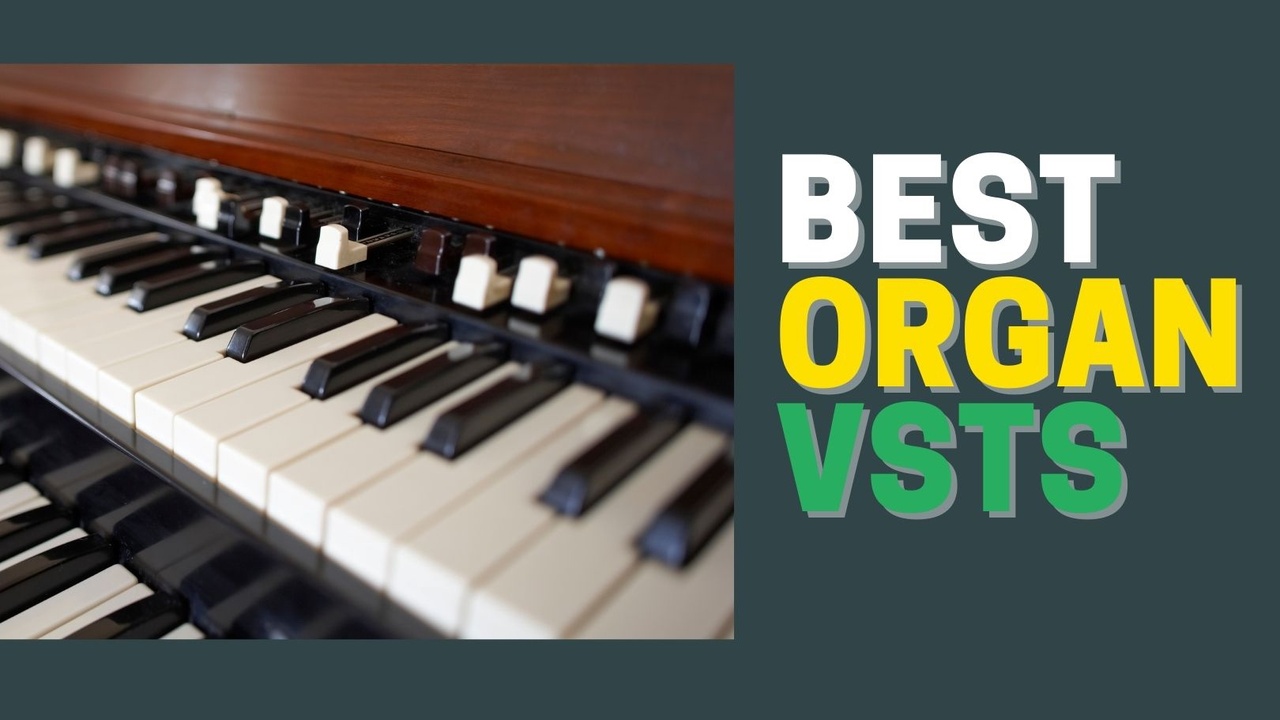
The organ revolutionized music in more ways than we could possibly count, probably even more so than any other instrument on Earth, including guitars, drums, or violins.
With so many organ VSTs on the market today, trying to find one that is realistic enough to fit nicely in your productions can be surprisingly difficult. Unless you’re going for that cheesy Muzak sound, you need a high-end organ VST that can deliver just like the real thing. And even if you're going for the cheesy sound, you'll want to make sure you've got the right brand of cheese! Nobody wants blue cheese on their spaghetti!
For that reason, we’ve compiled a list of some of our favorite organ VSTs for all of your production needs. Continue reading to find out more!
Note: this article may contain affiliate links, which mean that I receive a commission for any purchases you make, at no added cost to you.
Best Hammond B3 VST - Arturia B3-V
When it comes to replicating vintage instruments and gear, Arturia is one of the most respected companies around. While the company has plenty of instruments in its catalog, the Arturia B3-V stands out from the crowd for its exceptional realism. Hands down, this is the best Hammond VST, with great sound and great flexibility.
With side-by-side testing, this virtual instrument sounds insanely close to the real thing. Plus, with more than 86 factor presets to choose from, you can dial in some of your favorite B3 sounds with ease.
All of the best organ tones from the 60s and 70s can be replicated with this B3 plugin, plus many modern sounds for modern styles of production.
The great thing about the Arturia B-3 V is that it is not a sample virtual instrument. Instead, it makes use of Arturia’s Physical Modeling Engine, meaning you get a higher fidelity sound that is artificially programmed. Essentially, you can customize your sound at a surgical level and get as accurate as you deem necessary.
Arturia's B3 is a beautiful, powerful emulation of the classic rock, blues, & soul organ
Of course, Arturia has a knack for expanding on classic instruments as well. Beyond all of the controls that you would expect to find on a regular Hammond, there are plenty of other parameters that you can get in and adjust, most prominently the stompbox section. In this section, you can place guitar stompboxes, similar to how B3 players used to do, including wah-wahs, delays, overdrive, flanger, and more.
Some of the presets even give you access to LFOs with a number of waveforms and a step sequencer, allowing you to play your B3 just like you would a synthesizer.
Overall, the B-3 V from Arturia is highly usable and comes with excellent presets to get you started. If you need a realistic organ for rock, blues, jazz, or ballads, then this is the best one on the market.
Pros of the Arturia B-3 V
- Amazing emulation of a classic organ
- Great for rock music, soul, and blues
- Incredibly precise modeling
- Modern tone shaping flexibility
Cons of the Arturia B-3 V
- None
Best Farfisa VST - Arturia Farfisa V
Farfisa developed one of the most popular combo organs of the 1960s that was heard on countless records of the time. Arturia modeled this particular VST was modeled off of the Farfisa Combo Deluxe organ and the Duo Combo organ. Users get access to both Upper and Lower manuals, as well as a bass pedal section. With this section, players can switch between one and two-octave ranges and adjust the tone of the bass. Whether you want the sound of strings or flutes is up to you!
One of the coolest things about the Farfisa V is that Arturia has run it through a combo amp output. You can insert a number of stompbox effects in the chain as well, organizing them to get the most experimental tones possible. For the convolution reverb, you get more than 20 IR to pick from too!
The Farfisa V is the perfect organ for pop, psychedelic music, and reggae
If you’re looking to mimic the vibe of the 1960s when Farfisa ruled the organ game, then look no further than the Farfisa V. Of course, the Farfisa V works just as well in modern productions as well thanks to the fact that Arturia took it another step further with nuanced controls and parameters.
You can easily create your own waveforms using the ToneDraw feature, allowing you to choose the best waveform for the bass sound or customize your envelopes. Beyond that, you can even dial in the Tremolo and Repeater effects in sync with the rest of your project for a stuttered sound.
With 147 factors presets, seven unique add-on features, and high-end physical modeling, this is the best replication of the classic Farfisa organs on the market today.
Pros of the Arturia Farfisa V
- Amazing emulation of a classic organ
- Great for pop, psychedelic music, reggae
- Incredibly precise modeling
- Modern tone shaping flexibility
Cons of the Arturia Farfisa V
- None
Best Pipe Organ VST - Spitfire Union Chapel Organ
Spitfire is another one of those companies that constantly surprises us with high-end VSTs. The Spitfire Union Chapel Organ is modeled after the legendary chapel organ that was built by Henry Willis back in 1877 and resides in the Union Chapel in London. This organ was made to model the acoustics and the size of the Union Chapel and featured some of the best organ craftsmanship that the world had ever seen. The range on the Union Chapel organ was absolutely incredible, allowing for a massive range of tone and dynamics.
Whether a player wanted a roaring, thunderous bass sound or a soaring, angelic tone, the Union Chapel organ could provide.
Spitfire began the sampling project back in 2013, carefully gathering the wide range of the instrument in such a way that when it is played, you never get a sound that feels synthetic in any way. On the organ VST, users will find 10 eDNA presets that make use of the organ’s raw materials. There is also a DevKit onboard that allows users to craft their own atmospheric pads, synthesizers, and basses with pulsing effects.
The Spitfire Union Chapel organ was used on some of the most legendary movies of all time, including 2001 A Space Odyssey and The Godfather.
All of the legendary tones that you would expect to find in this VST are available on the clean GUI, providing users with in-depth control.
Pros of the Spitfire Union Chapel Organ
- Amazing emulation of a classic church organ
- Modern tone shaping flexibility
Cons of the Spitfire Union Chapel Organ
- Requires Kontakt
- 15 gb
Best Vox Continental VST - Arturia Vox Continental V
The Vox Continental was another popular organ from the 1960s, which was arguably made famous by The Doors. Arturia used its specialized physical modeling technology to recreate the sounds and layout of the Vox Continental 300. Beyond the organ, Arturia also modeled a number of different vintage amplifiers, allowing users to craft just about any sound that they have in their heads.
You get an array of Fender and Marshall amps, as well as multiple microphones that you can mix and match the amps with, including Neumann mics, Sennheiser mics, and Shure mics. You can even run your Vox Continental through the Leslie Rotary Speaker for those shimmering “underwater” tones, or use a mix of convolution reverbs and stompbox effects.
A beautiful organ for heavy rock sounds
As you probably expected, Arturia took it even further with in-depth editing. You can use the Open Mode to tune each individual pitch and alter the timing of the key contact.
Put the Vox Continental V side-by-side with the original hardware and you’ll see that everything is in the right place. From the skin of the Vox Continental V to the internal components to the sound, you would never guess that what you’re hearing isn’t the real thing.
You can even get some additional string waveforms on the three manuals thanks to the Extended Mode, as well as a tremolo switch, percussion, and a complement of drawbars. Recreating the sounds of The Doors, The Animals, and The Beatles is easier than ever with the Vox Continental V.
With 182 presets, three different playing models, a gorgeous user interface, and several emulated amplifiers for a wide range of tones, there is no way I’d recommend another Vox Continental emulation.
Pros of the Arturia Continental V
- Amazing emulation of a classic organ
- Great for rock
- Incredibly precise modeling
- Modern tone shaping flexibility
Cons of the Arturia Continental V
- None
Best Leslie Rotary Speaker VST - MVintageRotary
The sound of a vintage rotary is one of the sounds that shaped music, similar to the way the 808 shaped hip-hop and the Gibson guitar shaped rock and roll. MVintageRotary is one of the best rotary simulations on the market today, giving you the sound of the Leslie cabinet at your fingertips. As you can expect from a high-end VST, you also get plenty of advanced features to manipulate the sound however you please.
While the rotary was originally designed for organs, you can use it on guitars, keyboards, and just about any other instrument that sounds right to you. Even John Lennon famously used it on his vocals for Beatles recordings!
Add incredible movement and texture to your music with MVintagerotary!
There are three algorithms present on the MVintageRotary, giving you far more control than the original. You can control the amount of dynamics, the stereo width, and the internal dampening, among other things. The beauty of it is that even these new sounds have a natural tone to them, so much so that you would never guess you were playing a VST.
Beyond that, you can take the MVintageRotary even deeper, synchronizing the speed of the rotary cabinet to the tempo of your track, changing the direction of the rotary, and so much more! With your MIDI sustain pedal, you can even control the Fast/Slow switch to modulate your organ sound.
Melda Production was able to capture the unique analog distortion found on these cabinets perfectly. Of course, they also understood that modern productions often require heavier digital distortion, so they added that in there too.
Whether you want to use this rotary speaker for your organ VSTs, your guitars, your keys, or your vocals, is totally up to you. The amount of control that this rotary speaker VST provides is extremely powerful. You won’t find anything like it elsewhere.
Best Free Organ VST - CollaB3
You might not want to throw down $100+ for a vintage organ and we totally understand. Luckily, there are plenty of great free organ VSTs out there, one of which is the CollaB3 vintage tonewheel organ. This unique organ was developed by Sampleson with a number of collaborators, including LalalandAudio, Librewave, and Studio427 Audio. The team was able to craft a high-end, studio-quality instrument for free, which is pretty impressive.
All of the nuanced sounds that you would expect to get from a tonewheel organ can also be found on the CollaB3, including a variety of noises, clicks, rotary speakers, leakage, and much more. For added production experimentation, the CollaB3 also comes with reverb and chorus sounds.
For a free VST, we were also surprised as to how nicely the interface was arranged. The scalable HD interface gives you the layout of the organ, as well as a smaller section for manipulating the drawbars.
If you’re looking to impart the sound of soul, jazz, rock, or Motown on your recordings without having to drop a dime, then look no further than the CollaB3.
And if you're looking for even more free synths, be sure to check out this roundup of the 61 Best Free Synth Plugins!
Background and history of modern electric organs
The very first organ in recorded history came from the third century B.C. and used water to produce sound. This was long before the air and pipe system that was used throughout the middle ages and in many churches around the world today.
It wasn’t until the 1930s that electric organs came around, all thanks to the Hammond company, as film producers wanted the sound of theater organs in their works to represent the sound of an orchestra. These Hammond organs were quite unique, as they included options for sound manipulation, such as vibrato and percussion.
Laurens Hammond, the creator of the legendary organ, claimed that the instrument could replicate the range of a true pipe organ with all of the proper tones and harmonics, perfect for playing the great organ literature that had been passed down for many centuries.
These organs began making their way into the jazz world, developing at a much faster pace in the second half of the 20th century.
The B3 organ could be heard all over rock, soul, and Motown records.
During the 1960s and 1970s, smaller organs known as combo organs were developed and sold. These unique instruments were similar to modern keyboards and included one-touch chords, allowing players to accompany with ease. These organs, including those manufactured by companies like Vox and Farfisa, became extremely popular with pop, rock, and psychedelic bands, including Iron Butterfly and The Doors.
Today, you can still find pipe organs in theaters and churches, as they remain the most popular choice for chamber-style singing and accompaniment. However, there are now plenty of digital and synthesized organ choices out there, many of which act as digital replicants of classic organs.
By the way, click here to learn how to compress organ for an even better sound!
From a Frustrated Producer in a Ragtag Bedroom Studio to Major Placements on TV Earning $1,000s!
My name is Evan, and I've been making music since around 3rd grade. I'm from San Diego, California, but I've lived in Washington, DC for the last 20 years.
While I still have a full-time day job, I have created systems that have allowed me to produce dozens of songs a year in my spare time.
My songs have been on Netflix, TV shows like the 90 Day Fiance, an award-winning indie film, and NPR’s “All Thing Considered.” They've also been streamed millions of times.
In addition to being a music producer, I am passionate about teaching people how they can make professional-sounding music and earn money licensing it, all in their spare time.
Thousands of musicians, like yourself, have trusted me to guide their musical journey. My YouTube videos have been watched nearly a million times. And my story has been in Forbes, Side Hustle Nation, and the Side Hustle School.
